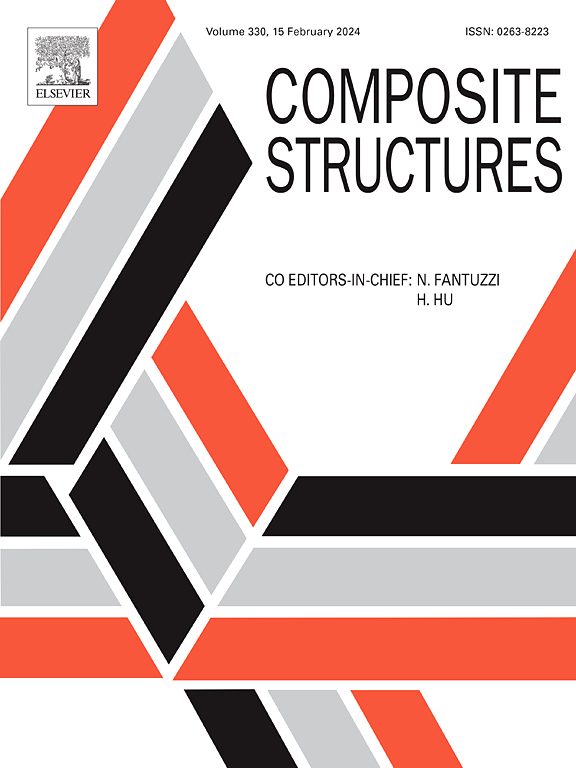Bio-inspired hybrid composite fabrication 3D-printing approach for multifunctional flexible wearable sensors applications
IF 6.3
2区 材料科学
Q1 MATERIALS SCIENCE, COMPOSITES
引用次数: 0
Abstract
A bio-inspired, hybrid, multifunctional flexible sensor is developed for wearable applications. The hybrid sensor is fabricated using Fused Deposition Modeling (FDM) 3D printing and incorporates significant technical innovations. This sensor integrates a thermoplastic polyurethane (TPU-base core body) filament, graphene, and Poly(3,4-ethylenedioxythiophene)-poly(styrenesulfonate) PEDOT: PSS made-composite, utilizing a novel dip-coating technique to create high-aspect-ratio channels. Critically, we have developed a new method to compensate for drooping in bridging layers during the FDM printing process, a significant challenge in achieving precise microstructures. Demonstrating its potential for strain, temperature, pressure, and health monitoring. Results exhibit a high gauge factor (GF) of ≈4033.2 at 30 % tensile strain, detect strains as low as 0.01 %, and achieve a stretchability of 250 %. Furthermore, it demonstrates sensitivity to pressures ranging (max 150 %, mini 10 Pa), dynamic stretching (at 2, 6, 9, 10, 18, 21 mm), and thermal performance (0–90 °C). Subsequently, we propose on-site monitoring; the sensor’s ability to detect subtle and vigorous human motions is highlighted, suggesting its suitability for bodily deformations including subtle movements. This approach, incorporating these key fabrication innovations, paves the way for advanced wearable sensors capable of detecting a wide range of human motions for diverse healthcare applications.

求助全文
约1分钟内获得全文
求助全文
来源期刊

Composite Structures
工程技术-材料科学:复合
CiteScore
12.00
自引率
12.70%
发文量
1246
审稿时长
78 days
期刊介绍:
The past few decades have seen outstanding advances in the use of composite materials in structural applications. There can be little doubt that, within engineering circles, composites have revolutionised traditional design concepts and made possible an unparalleled range of new and exciting possibilities as viable materials for construction. Composite Structures, an International Journal, disseminates knowledge between users, manufacturers, designers and researchers involved in structures or structural components manufactured using composite materials.
The journal publishes papers which contribute to knowledge in the use of composite materials in engineering structures. Papers deal with design, research and development studies, experimental investigations, theoretical analysis and fabrication techniques relevant to the application of composites in load-bearing components for assemblies, ranging from individual components such as plates and shells to complete composite structures.
 求助内容:
求助内容: 应助结果提醒方式:
应助结果提醒方式:


